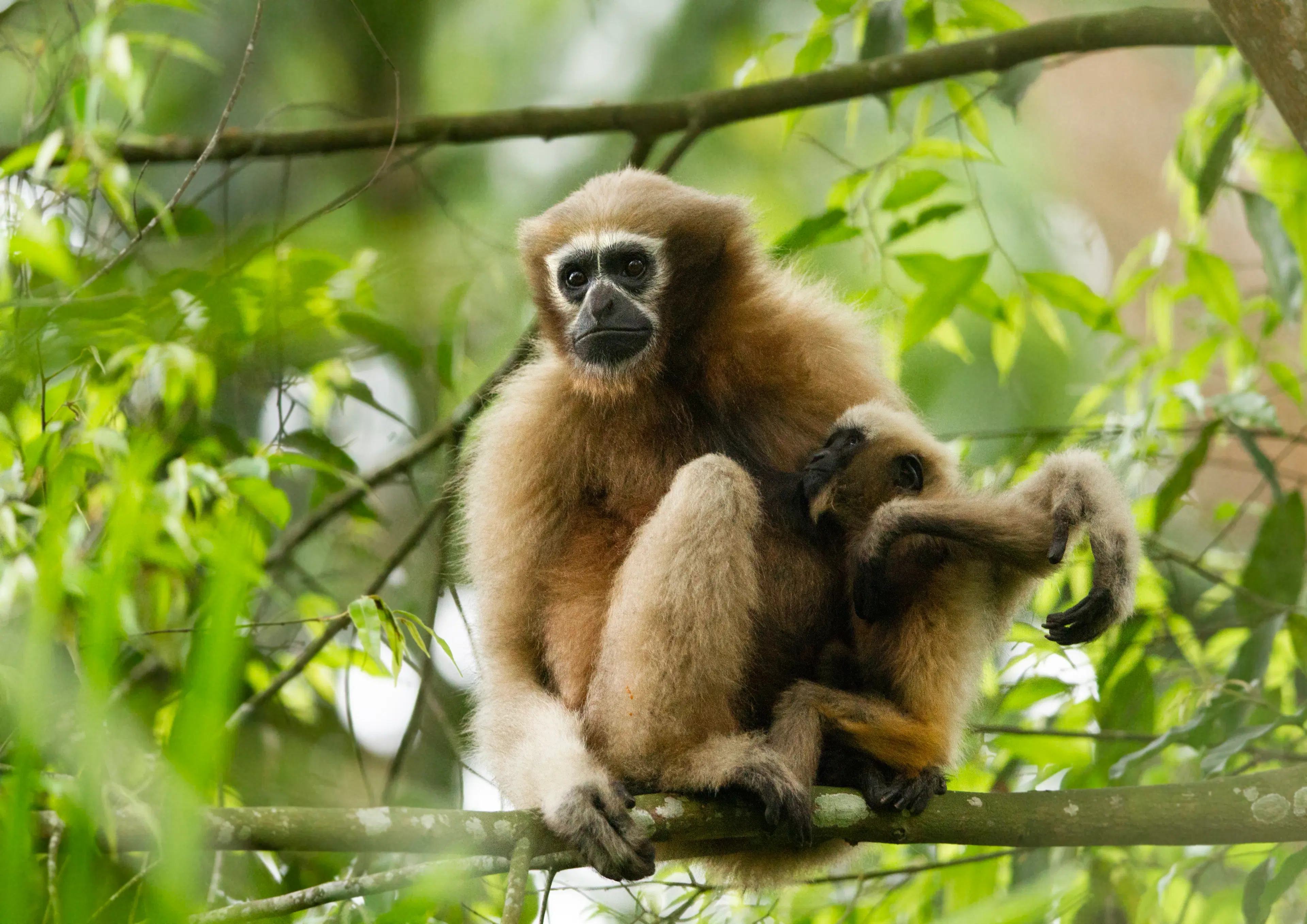
Flights
•04 min read

Assam, with its lush green expanses and vibrant wildlife, is a treasure trove for nature enthusiasts. The air hums with the symphony of chirping birds and rustling leaves, inviting adventurers to explore its pristine protected areas. This blog is designed to serve as your guide, offering actionable tips and expert advice to help you journey through the wildlife sanctuaries in Assam like a pro. Read on to uncover the secrets behind Assam's national parks, wildlife reserves, and eco-tourism gems.
Wildlife sanctuaries are special areas dedicated to the protection and conservation of animals and their natural habitats. In Assam, these protected areas play a crucial role in preserving rich biodiversity and serve as a sanctuary for countless species. Currently, Assam is home to roughly 18 wildlife sanctuaries and 7 national parks, making it one of India's most important hotspots for wildlife conservation and nature parks.
Among Assam’s many protected areas, several stand out for their unique natural offerings. Kaziranga National Park is widely celebrated for its population of the iconic Indian one-horned rhinoceros. Manas National Park offers not only stunning landscapes but also a living laboratory for wildlife conservation. Pabitora Wildlife Sanctuary and Dibru-Saikhowa National Park add to this diverse portfolio, each contributing its distinctive blend of flora and fauna, such as the vibrant bird diversity found in regions like Deepor Beel.
The most favorable period for exploring the wildlife sanctuaries in Assam is during winter and early spring. The pleasant climate during these months ensures better accessibility and creates ideal conditions for wildlife sightings. The cooler weather makes it easier to traverse the rugged terrains, while migratory birds and active animals enhance the overall viewing experience.
Assam offers a variety of wildlife reserves each catering to different interests. For the avid birdwatcher, sanctuaries like Pani-Dihing are a delight with their diverse avian species. If spotting endangered species such as primates intrigues you, then Hoollongapar Gibbon Sanctuary should be on your itinerary. Whether you are fascinated by intricate ecosystems or focused on conservation, there’s a protected area in Assam perfectly tailored for your passion.
Before setting out on your wildlife adventure, it’s important to pack the essentials. Carry binoculars to get a closer look at distant creatures and wear comfortable, weather-appropriate clothing. Insect repellent and sturdy walking shoes are also advisable, given the natural terrain. Additionally, be sure to check the local guidelines regarding permits and entry fees, as each sanctuary has its own set of regulations designed to protect both the visitors and the wildlife.

Eco-tourism is the heart of Assam’s wildlife tourism strategy. This form of travel not only immerses you in the wonders of nature, but also promotes sustainable practices that reduce environmental impact. By following local guidelines and minimizing disturbances, you help conserve the delicate balance of these habitats for generations to come. Remember, responsible travel is about enjoying nature while preserving its pristine beauty.
To truly appreciate the treasures of Assam’s wildlife reserves in Assam, hiring a knowledgeable local guide is highly beneficial. Local guides can illuminate lesser-known trails and share fascinating insights about the area’s ecology. While exploring, always adhere to the park rules, stick to the designated paths, and avoid feeding the wildlife to ensure both your safety and that of the creatures you encounter.
Your journey through Assam’s nature parks is best remembered by capturing its moments through photography. Bring a reliable camera to document the majestic landscapes and diverse fauna. Some of the prime photography spots include the serene expanses of Kaziranga and the rugged beauty of Manas. The golden hours of early morning and late afternoon offer the best natural lighting, ideal for snapping stunning shots of the region's vibrant wildlife.
Assam is at the forefront of wildlife conservation in India. The state has implemented several initiatives to safeguard endangered species, including the celebrated one-horned rhinoceros and the elusive hoolock gibbons. These sanctuaries not only serve as safe havens but also play an active role in rehabilitation and captive breeding programs, contributing significantly to the preservation of biodiversity in Assam.
Eco-tourism in Assam goes beyond enjoying natural beauty; it also supports local livelihoods. By engaging with community-run tours and purchasing locally made products, travelers contribute directly to sustainable development. Local communities often organize conservation programs and cultural experiences that enhance your journey while providing economic benefits to the region. This symbiotic relationship between visitors and locals is fundamental to sustaining Assam's rich natural heritage.

Did you know? Hiring a certified local guide not only enhances your wildlife spotting opportunities but also supports community livelihoods and ensures you get insider knowledge about Assam’s rich biodiversity.
Dihing Patkai National Park was recently upgraded from a wildlife sanctuary to a national park, making it one of the newest protected areas in Assam.
The seven national parks in Assam are Kaziranga, Manas, Dibru-Saikhowa, Nameri, Orang, Raimona, and Dehing Patkai National Parks.
Assam has 18 wildlife sanctuaries, each offering unique biodiversity and conservation efforts.
The best time to visit is between November and April, when the weather is pleasant, and wildlife sightings are more frequent.
Endangered species in Assam include the Indian one-horned rhinoceros, hoolock gibbons, pygmy hogs, and Bengal florican.
Assam promises an immersive experience for anyone passionate about wildlife and nature. With clear guidance on choosing the right sanctuary, planning your visit, and responsibly engaging with nature, you are equipped to enjoy the best of Assam’s national parks and wildlife reserves. Delve deeper into this remarkable region, where each journey contributes to a broader conservation effort and the celebration of nature's breathtaking beauty.